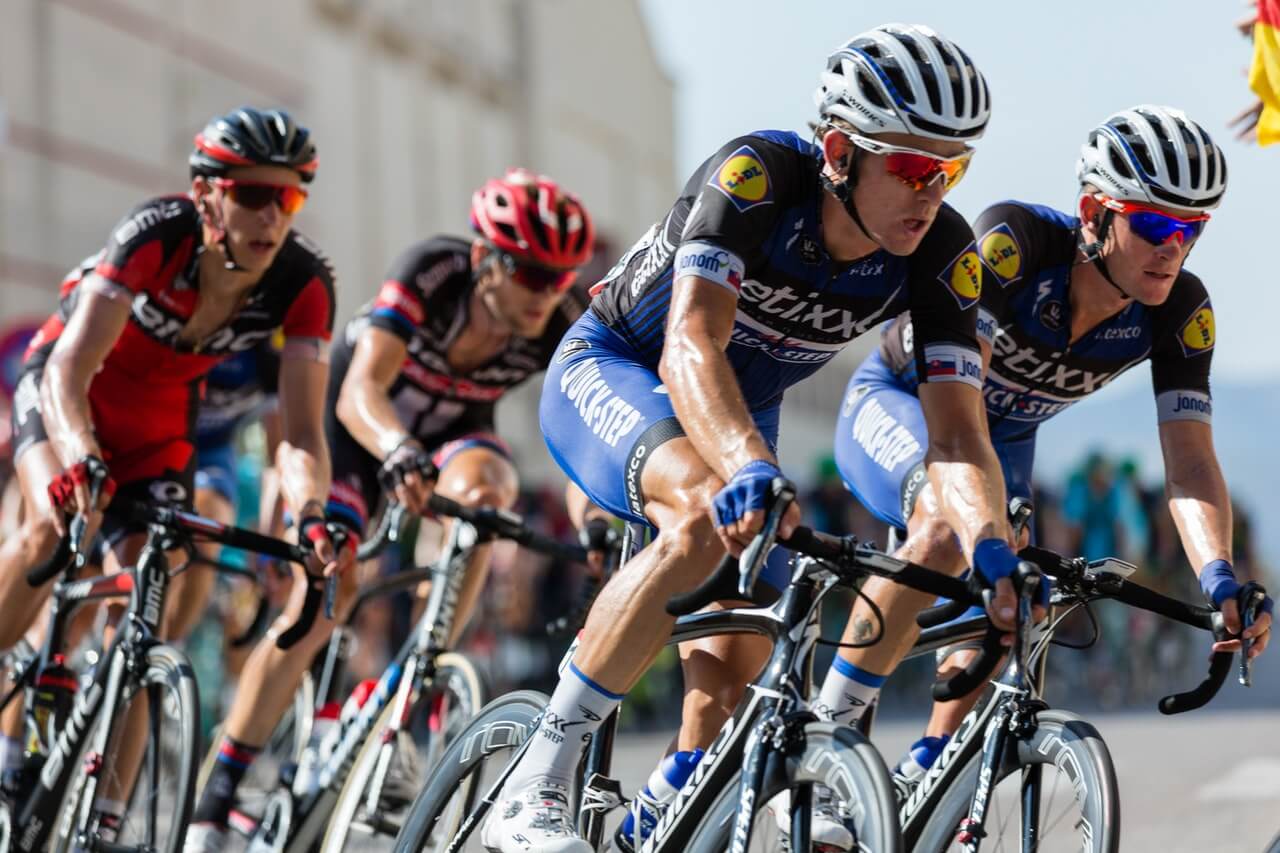We know a lot of our patients have recently dusted off their bikes for the season. We’re so happy to see many of you staying active and getting some much-needed fresh air! Cycling is one of the most versatile activities you can do since it can be done competitively, recreationally, casually or even just serve as a mode of transportation. However, we thought now would be a good time to remind you all of the proper biking equipment and setup necessary to help you avoid any aches, pains, and injuries. Whether you are a beginner cyclist, taking up the sport, or a seasoned cyclist looking to optimize your season, the proper setup is essential to your success. Here are our team’s five areas you should consider and evaluate before getting back into the saddle this spring. While these tips are targeted towards those of you taking on outdoor cycling, some of them are also applicable to all of you indoor cyclist and stationary bike users out there.
1) Helmets
Wearing a helmet that fits you properly is the most important step you can take when it comes to preventing serious biking injuries. The most common cause of serious injury cyclists face each year is collisions with a vehicle and helmets are essential to reducing life-threatening head injuries during these events. Starting by choosing a helmet that is age-appropriate – there are smaller helmets for children and most come with foam inserts that you can adjust for a better fit. The perfect helmet for you is one that is not too loose and covers your forehead. The straps should create a snug V-shape around your ears and there should be just enough space between them and your chin to fit one finger width. You want to avoid second-hand helmets and replace yours every 5 years, once it does not fit properly, or you have been in a crash. While always wearing a properly fitted helmet will certainly reduce the risk of serious head injuries, remember that any fall that leads to any impact on the head, face, or neck can still cause a concussion – please speak to your healthcare provider immediately if you are worried you may be experience symptoms of a concussion

2) Seat Position
One of the main contact points you have with your bike is with the seat. When it comes to finding the right seat position for you, it is always helpful to start with basic seat height measurements. When standing beside your bike with your biking shoes on (or whatever appropriate footwear you will be cycling in), your seat should reach the top of your hip bone. It is important to be wearing your shoes for this measurement as they can add some height when riding. Test this new position by sitting on the bike with your hips level to the ground and place one heel on the pedal. You’re in the right position if your knee is fully extended when you are at the lowest part of your pedal stroke. For the serious cyclists out there, the optimal leg angle is 140-145 degrees in this position to maximize power output and avoid knee injury. Outside of seat height, some bikes allow you to move your seat more towards the back or front of your bike. This one is more about comfort and personal preference than safety, but for a quick check, your knees should be in line with your toes to ensure a good starting position.
3) Handlebar Height
Not all bikes have adjustable handlebars, but it is a luxury you should take advantage of if you have it. Many starter and stationary bikes have very adjustable handlebars that should be put at a height slightly higher than your seat – aim for just one notch higher if you can. For stationary bikes, the lower the handlebars, the more your core will have to work to hold you up when sprinting out of the saddle. Try raising your handlebars if you are having some lower back discomfort or too much rotation in your hips or back. Outside of this, adjusting your handlebars will be more about personal preference when it comes to comfort and performance. Higher handlebars can provide a more comfortable ride but will also decrease how aerodynamic you are while lower handlebars will help you glide through any wind but could be more uncomfortable.
If you are a more seasoned cyclist or want to one day build up your capabilities to bike competitively, choosing a bike frame that fits properly is essential. This way you do not need to worry about adjusting the height of your handlebars because they will already be in the best position for you and your body. Making sure the frame itself is the perfect fit means you will only have to rotate the handlebars to adjust your grip positioning.

4) Foot Placement
Foot placement is important whether you are using click-in cycling shoes or standard flat pedals with running shoes. Aligning your feet properly to your pedal and bike will not only help prevent injury and falls, but it will also optimize your power and overall cycling performance. Make sure the midline of your foot is perpendicular to the pedal. While the midline of each foot is relative to shape and size, try to align the middle of your pedal to the point between your second and third toes. You do not want your foot to be off in either direction as this can cause lower limb pain or injury. You also want to centre the ball of your foot with your pedal or directly over the point where it pivots. To help ensure your feet are always properly aligned, opt for clips and cleats. You can get these cleats properly fitted to your feet and they clip into the pedals to guarantee your foot placement is correct each ride. Clips and cleats will also help you pull with your push, meaning you get an increase in power from your hamstrings to make for a more balanced exercise.
5) Biking Outfit
Cyclists often get slack for going all out with their outfits, but it really is for good reason– we promise! Every part of the outfit is necessary for comfort and optimal performance so think twice before making fun of our specific getups next time. For example, one of the most off-putting but also, as of recent, trendy pieces of clothing is the biking shorts. Since these shorts are longer, they help prevent chaffing which can happen if your thighs are not protected from the constant rubbing against the saddle. Their skin-tight nature also helps provide a full range of motion while also promoting blood flow to your legs as you ride. This means it will take longer for your legs to feel tired and they will feel the benefits of physical activity more than if you were to not wear bike shorts. Some shorts also come with extra padding to help evenly distribute weight on your seat. Everything else from the cycling caps, glasses, gloves, jerseys, waterproof jackets, socks, leg or arm warmers, and even padded underwear all serve a purpose in protecting your body and increasing your performance.
—
We hope that this blog helps you feel more ready and confident getting into the saddle this spring! Focus on these areas to make sure you have the proper setup to tackle this cycling season safely and efficiently. Remember that it is always important to prepare your body for any kind of activity, perhaps even more so if you have had a less active winter. If you do start to feel any unusual aches, pains, strains, or discomfort during this year’s biking season, please do not ignore it or you risk worsening your symptoms and causing a serious injury. Connect with our team for more support if you experience any kind of cycling injury.
Give any of our four clinics a call or fill out our contact forms with any questions. Connect with our teams in Baden, Kitchener (Lancaster and Driftwood), and Waterloo to learn how physiotherapy can enhance your overall quality of life. We’re also always happy to help answer any general physiotherapy and wellness questions, provide you with health tips, and schedule a consultation. Just ask!

